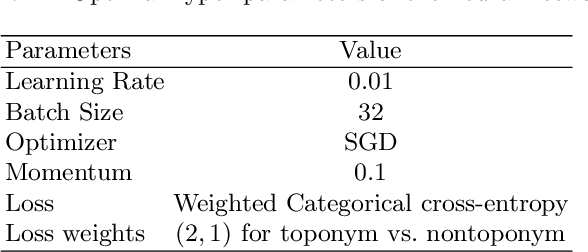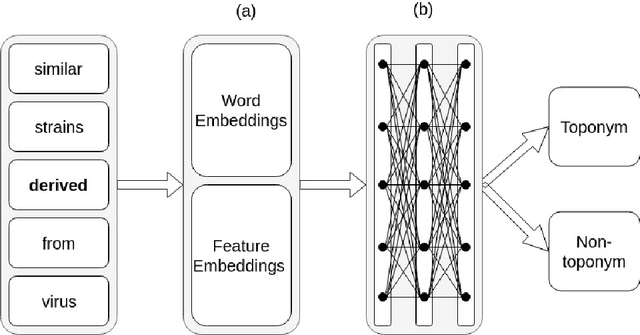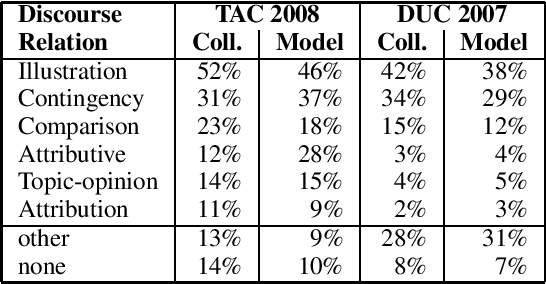Leila Kosseim
Multi-Lingual Implicit Discourse Relation Recognition with Multi-Label Hierarchical Learning
Aug 28, 2025Abstract:This paper introduces the first multi-lingual and multi-label classification model for implicit discourse relation recognition (IDRR). Our model, HArch, is evaluated on the recently released DiscoGeM 2.0 corpus and leverages hierarchical dependencies between discourse senses to predict probability distributions across all three sense levels in the PDTB 3.0 framework. We compare several pre-trained encoder backbones and find that RoBERTa-HArch achieves the best performance in English, while XLM-RoBERTa-HArch performs best in the multi-lingual setting. In addition, we compare our fine-tuned models against GPT-4o and Llama-4-Maverick using few-shot prompting across all language configurations. Our results show that our fine-tuned models consistently outperform these LLMs, highlighting the advantages of task-specific fine-tuning over prompting in IDRR. Finally, we report SOTA results on the DiscoGeM 1.0 corpus, further validating the effectiveness of our hierarchical approach.
CLaC at SemEval-2025 Task 6: A Multi-Architecture Approach for Corporate Environmental Promise Verification
May 29, 2025Abstract:This paper presents our approach to the SemEval-2025 Task~6 (PromiseEval), which focuses on verifying promises in corporate ESG (Environmental, Social, and Governance) reports. We explore three model architectures to address the four subtasks of promise identification, supporting evidence assessment, clarity evaluation, and verification timing. Our first model utilizes ESG-BERT with task-specific classifier heads, while our second model enhances this architecture with linguistic features tailored for each subtask. Our third approach implements a combined subtask model with attention-based sequence pooling, transformer representations augmented with document metadata, and multi-objective learning. Experiments on the English portion of the ML-Promise dataset demonstrate progressive improvement across our models, with our combined subtask approach achieving a leaderboard score of 0.5268, outperforming the provided baseline of 0.5227. Our work highlights the effectiveness of linguistic feature extraction, attention pooling, and multi-objective learning in promise verification tasks, despite challenges posed by class imbalance and limited training data.
A Multi-Task and Multi-Label Classification Model for Implicit Discourse Relation Recognition
Aug 16, 2024



Abstract:In this work, we address the inherent ambiguity in Implicit Discourse Relation Recognition (IDRR) by introducing a novel multi-task classification model capable of learning both multi-label and single-label representations of discourse relations. Leveraging the DiscoGeM corpus, we train and evaluate our model on both multi-label and traditional single-label classification tasks. To the best of our knowledge, our work presents the first truly multi-label classifier in IDRR, establishing a benchmark for multi-label classification and achieving SOTA results in single-label classification on DiscoGeM. Additionally, we evaluate our model on the PDTB 3.0 corpus for single-label classification without any prior exposure to its data. While the performance is below the current SOTA, our model demonstrates promising results indicating potential for effective transfer learning across both corpora.
Analyzing Persuasive Strategies in Meme Texts: A Fusion of Language Models with Paraphrase Enrichment
Jul 01, 2024



Abstract:This paper describes our approach to hierarchical multi-label detection of persuasion techniques in meme texts. Our model, developed as a part of the recent SemEval task, is based on fine-tuning individual language models (BERT, XLM-RoBERTa, and mBERT) and leveraging a mean-based ensemble model in addition to dataset augmentation through paraphrase generation from ChatGPT. The scope of the study encompasses enhancing model performance through innovative training techniques and data augmentation strategies. The problem addressed is the effective identification and classification of multiple persuasive techniques in meme texts, a task complicated by the diversity and complexity of such content. The objective of the paper is to improve detection accuracy by refining model training methods and examining the impact of balanced versus unbalanced training datasets. Novelty in the results and discussion lies in the finding that training with paraphrases enhances model performance, yet a balanced training set proves more advantageous than a larger unbalanced one. Additionally, the analysis reveals the potential pitfalls of indiscriminate incorporation of paraphrases from diverse distributions, which can introduce substantial noise. Results with the SemEval 2024 data confirm these insights, demonstrating improved model efficacy with the proposed methods.
* 15 pages, 8 figures, 1 table, Proceedings of 5th International Conference on Natural Language Processing and Applications (NLPA 2024)
Deep Hedging with Market Impact
Feb 22, 2024



Abstract:Dynamic hedging is the practice of periodically transacting financial instruments to offset the risk caused by an investment or a liability. Dynamic hedging optimization can be framed as a sequential decision problem; thus, Reinforcement Learning (RL) models were recently proposed to tackle this task. However, existing RL works for hedging do not consider market impact caused by the finite liquidity of traded instruments. Integrating such feature can be crucial to achieve optimal performance when hedging options on stocks with limited liquidity. In this paper, we propose a novel general market impact dynamic hedging model based on Deep Reinforcement Learning (DRL) that considers several realistic features such as convex market impacts, and impact persistence through time. The optimal policy obtained from the DRL model is analysed using several option hedging simulations and compared to commonly used procedures such as delta hedging. Results show our DRL model behaves better in contexts of low liquidity by, among others: 1) learning the extent to which portfolio rebalancing actions should be dampened or delayed to avoid high costs, 2) factoring in the impact of features not considered by conventional approaches, such as previous hedging errors through the portfolio value, and the underlying asset's drift (i.e. the magnitude of its expected return).
Toponym Identification in Epidemiology Articles - A Deep Learning Approach
Apr 28, 2019



Abstract:When analyzing the spread of viruses, epidemiologists often need to identify the location of infected hosts. This information can be found in public databases, such as GenBank, however, information provided in these databases are usually limited to the country or state level. More fine-grained localization information requires phylogeographers to manually read relevant scientific articles. In this work we propose an approach to automate the process of place name identification from medical (epidemiology) articles. The focus of this paper is to propose a deep learning based model for toponym detection and experiment with the use of external linguistic features and domain specific information. The model was evaluated using a collection of 105 epidemiology articles from PubMed Central provided by the recent SemEval task 12. Our best detection model achieves an F1 score of $80.13\%$, a significant improvement compared to the state of the art of $69.84\%$. These results underline the importance of domain specific embedding as well as specific linguistic features in toponym detection in medical journals.
CLaC at SemEval-2016 Task 11: Exploring linguistic and psycho-linguistic Features for Complex Word Identification
Sep 08, 2017

Abstract:This paper describes the system deployed by the CLaC-EDLK team to the "SemEval 2016, Complex Word Identification task". The goal of the task is to identify if a given word in a given context is "simple" or "complex". Our system relies on linguistic features and cognitive complexity. We used several supervised models, however the Random Forest model outperformed the others. Overall our best configuration achieved a G-score of 68.8% in the task, ranking our system 21 out of 45.
Argument Labeling of Explicit Discourse Relations using LSTM Neural Networks
Sep 07, 2017



Abstract:Argument labeling of explicit discourse relations is a challenging task. The state of the art systems achieve slightly above 55% F-measure but require hand-crafted features. In this paper, we propose a Long Short Term Memory (LSTM) based model for argument labeling. We experimented with multiple configurations of our model. Using the PDTB dataset, our best model achieved an F1 measure of 23.05% without any feature engineering. This is significantly higher than the 20.52% achieved by the state of the art RNN approach, but significantly lower than the feature based state of the art systems. On the other hand, because our approach learns only from the raw dataset, it is more widely applicable to multiple textual genres and languages.
The CLaC Discourse Parser at CoNLL-2015
Aug 19, 2017



Abstract:This paper describes our submission (kosseim15) to the CoNLL-2015 shared task on shallow discourse parsing. We used the UIMA framework to develop our parser and used ClearTK to add machine learning functionality to the UIMA framework. Overall, our parser achieves a result of 17.3 F1 on the identification of discourse relations on the blind CoNLL-2015 test set, ranking in sixth place.
Measuring the Effect of Discourse Relations on Blog Summarization
Aug 19, 2017



Abstract:The work presented in this paper attempts to evaluate and quantify the use of discourse relations in the context of blog summarization and compare their use to more traditional and factual texts. Specifically, we measured the usefulness of 6 discourse relations - namely comparison, contingency, illustration, attribution, topic-opinion, and attributive for the task of text summarization from blogs. We have evaluated the effect of each relation using the TAC 2008 opinion summarization dataset and compared them with the results with the DUC 2007 dataset. The results show that in both textual genres, contingency, comparison, and illustration relations provide a significant improvement on summarization content; while attribution, topic-opinion, and attributive relations do not provide a consistent and significant improvement. These results indicate that, at least for summarization, discourse relations are just as useful for informal and affective texts as for more traditional news articles.
 Add to Chrome
Add to Chrome Add to Firefox
Add to Firefox Add to Edge
Add to Edge